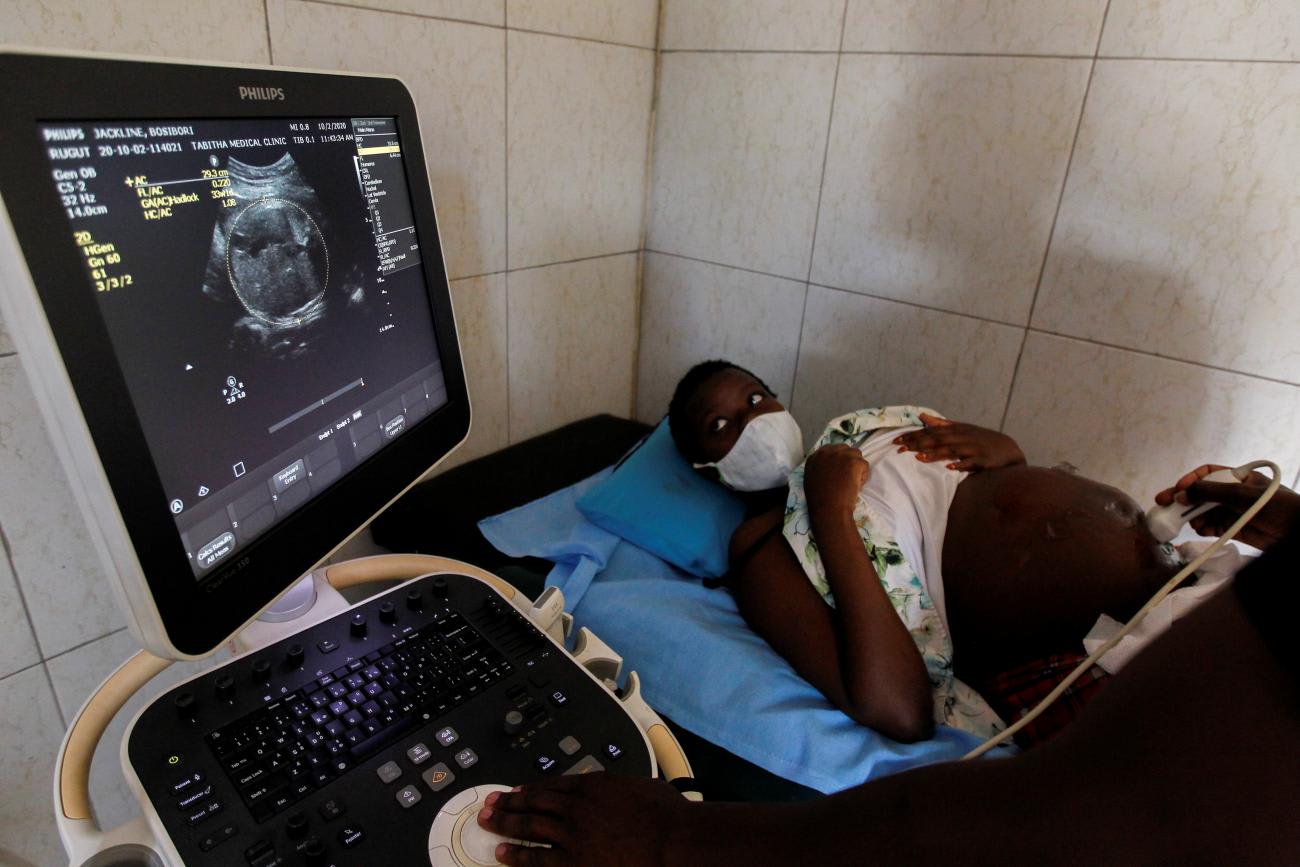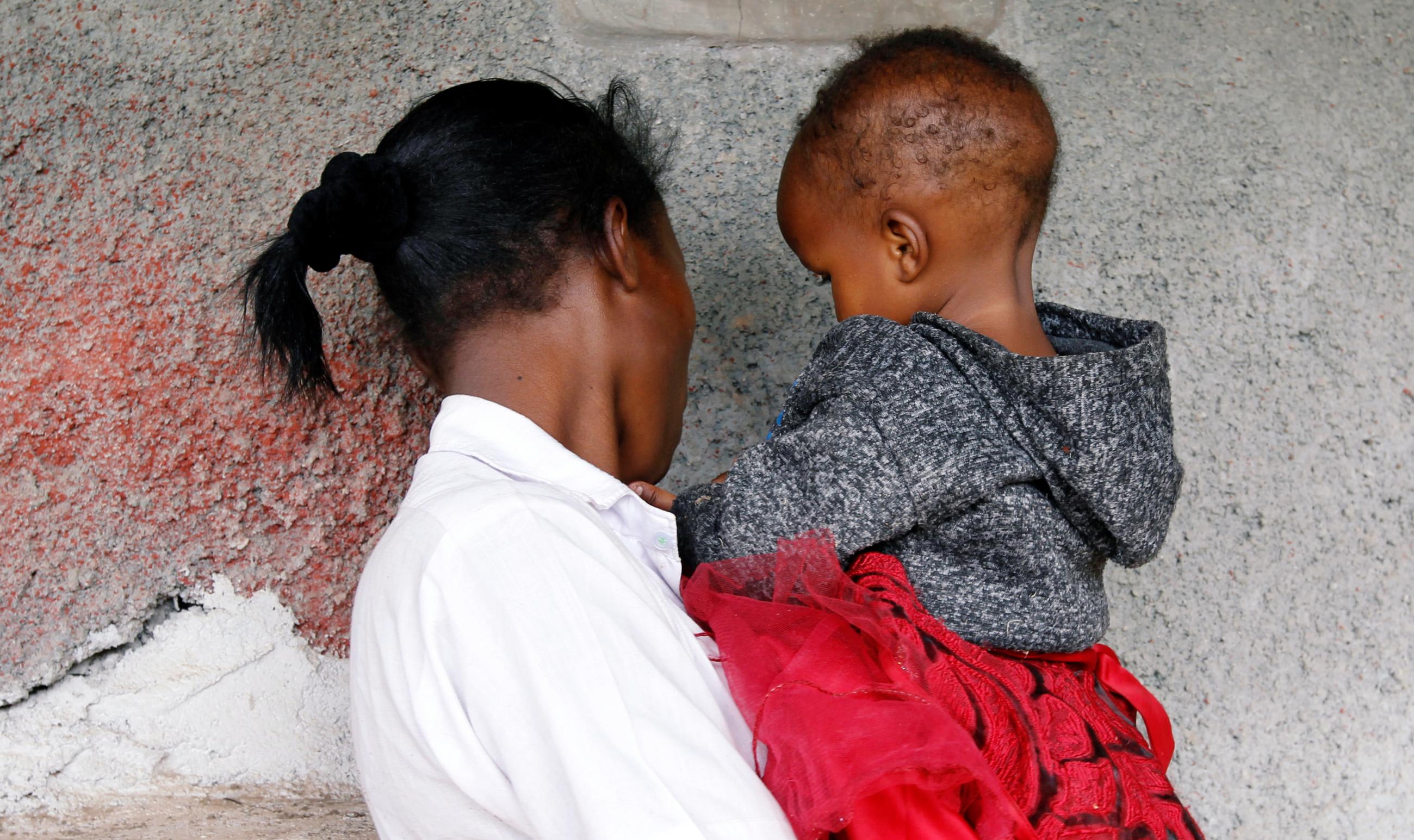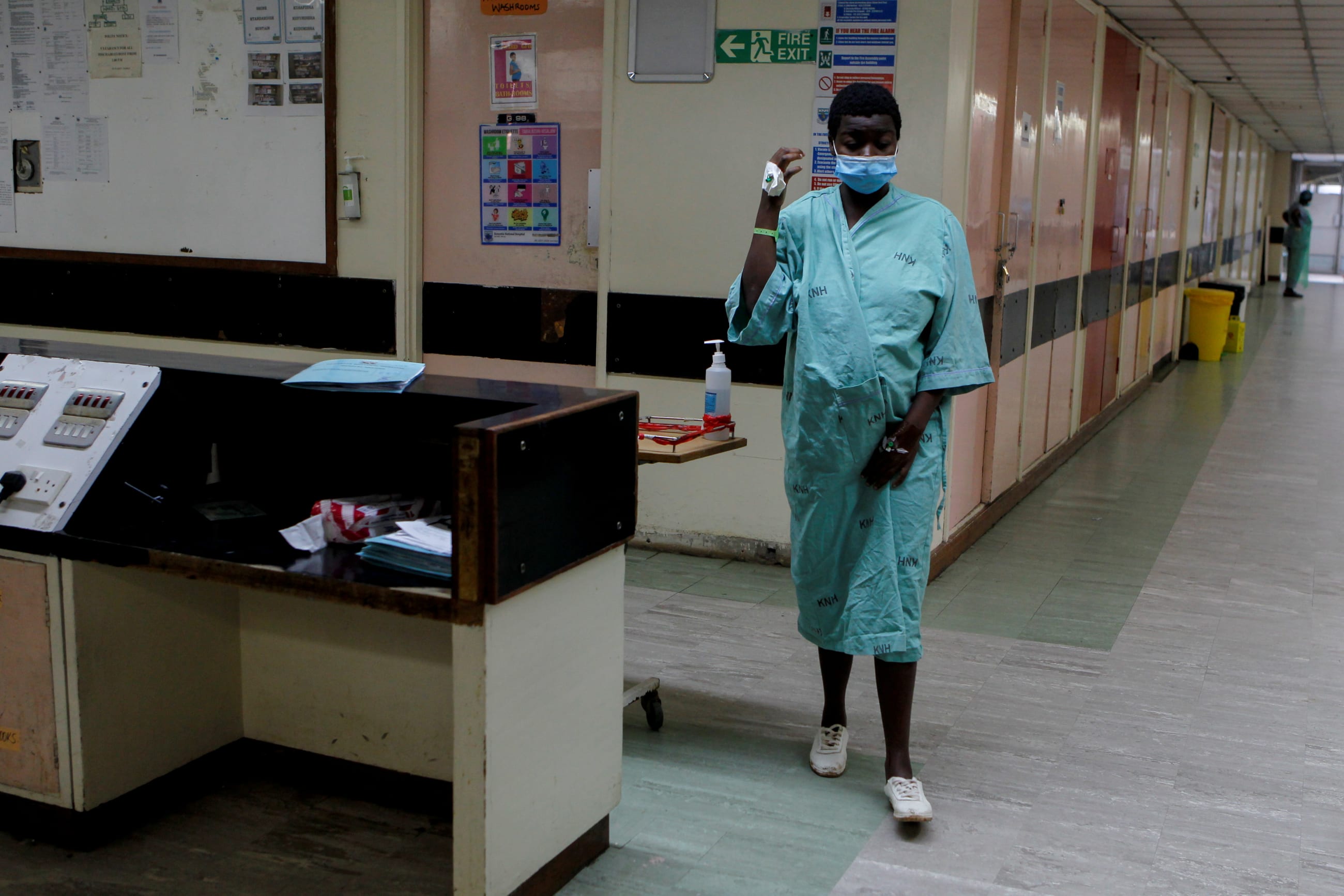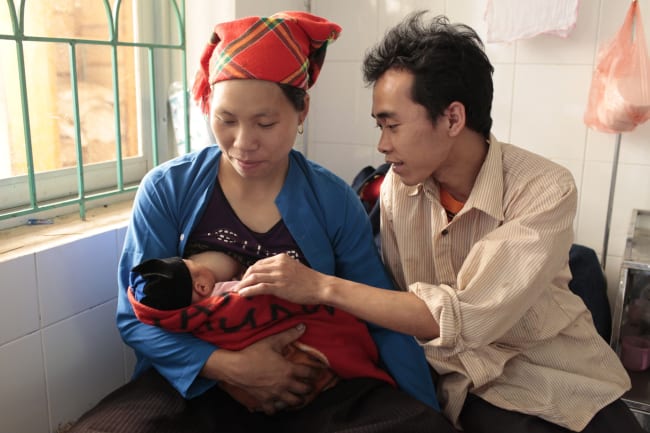It can take a pregnant woman up to twenty hours to reach a health-care facility while traveling by foot in some of Kenya's rural provinces. Patients from remote areas are especially at risk for pregnancy-related complications and death because of barriers to lifesaving reproductive health care.
In Kenya, maternal mortality is high. Despite global advances in prenatal and maternal care in recent decades, there has been no significant decline in deaths related to pregnancy for over twenty years. At the same time, Kenyan policymakers are taking steps to save the lives of pregnant women and people. On a national level, progressive legislation for free access to health care has been passed, and there are now established classifications for trained health-care personnel to work as skilled birthing attendants (e.g. doctors, nurses, or midwives who have received medical training at a government facility). Local initiatives to improve transportation are also being developed to ensure that patients are able to travel efficiently to a health facility, sometimes using unique methods of transport across difficult-to-navigate geographical terrains.
Manasi Kumar, an expert on maternal and child health in Kenya, who has worked in East Africa for more than ten years, and focuses on the development of sustainable intervention approaches for young women during the peripartum period—the time right before, during, and immediately after giving birth—found that patients and health-care workers face daily challenges stemming from health-care facilities that are in disrepair. Without basic resources, like electricity, providers are unable to maintain patient records electronically and have difficulties providing adequate care. These challenges contribute to the lack of access to health care for many patients, especially those who reside outside of urban areas, where health facilities are often unable to meet the needs of pregnant patients.
Insufficient access to high quality antenatal care, along with barriers to emergency obstetric care, including cesarean sections, contribute to maternal health challenges in Kenya. For example, in 2016, only 16 percent of Kenya's health facilities were able to provide emergency obstetric care.
Maternal Mortality Ratio, Rate per 100,000 Live Births
Obstacles and Barriers to Pregnancy Care
Previous research has shown that without routine care, including regular antenatal visits with health personnel for counseling, ultrasounds, and blood tests, women are more likely to die from complications during pregnancy and childbirth. When pregnant patients seek health care, it is critical for them to receive treatment from a trained clinician such as a nurse, midwife, or doctor, and ensure timely access to a delivery facility stocked with enough supplies, drugs, and functioning equipment to serve patients.
A pregnant patient seeking care in the western-most provinces of Kenya will face significantly different challenges than one living in a large urban area like Mombasa, a coastal city in southeastern Kenya that boasts a population of about 1.2 million. For instance, in rural, western Kenya, even if a patient wants to see a doctor, access to timely and routine health checks at a nearby clinic may not be available. Even if these services are available, the facility might not accept patients at night or during scheduled breaks, or have dependable, clean, running water and electricity.
Kumar points out the ironies within some rural areas, "Remote locations have soda available but no drinkable water."
In settings of uneven development and modernization, patients are left with few solutions for accessible antenatal care, and even fewer choices are available when it comes time to deliver a baby.
Remote locations have soda available but no drinkable water
Dr. Manasi Kumar
Although survey data show that many women in Kenya would like to give birth in a health facility with a health-care worker who is trained in delivery care, barriers including long travel times to a facility often stand in the way. In urban areas in Kenya, 98 percent of births are overseen by a skilled birth attendant in a health facility. In rural parts of Kenya, that number drops to 94 percent of births with any available health personnel in any facility. This leaves a significant number of patients without any type of skilled birth attendant coverage, and with over one million pregnant patients residing in rural areas, approximately 75,000 deliveries happened without any type of skilled health-care coverage. Even if a pregnant woman or person from a rural area can reach a facility, it might not have the capacity to provide high-quality care. A 2010 survey found that nearly half of all delivery facilities in Kenya lacked equipment to manage common delivery complications including emergency caesarean sections and blood transfusions.
With limited options, expectant parents living in rural areas could have no choice but to give birth at home, or to pay for a traditional birth attendant—a community-based worker without formal health care training, rather than a government-trained health care worker.
At the time of delivery, an expectant parent from Migori, in western Kenya, could travel more than eight hours by foot to a health-care facility, while an expectant parent in Nairobi could be within a fifteen-minute walk of a similar facility. The significant disparity in travel times between rural and urban areas can contribute to more complications for the parent and child, or pregnancy-related mortality. In a crisis requiring emergency obstetric care, the choice of a facility can affect delivery outcomes, as well. For example, researchers have found that facilities that deliver more than five-hundred births a year and perform cesarean sections are more likely to provide a higher quality of care. These high-capacity facilities can be inaccessible to families in rural areas, and oftentimes, motorized vehicles like taxis or hazardous motorbike taxis are the only options available, as ambulances are not often stationed in smaller, remote health facilities.

A pregnant person living in a rural area of Kenya should carefully consider if it is financially feasible to travel to and stay near a large hospital in an urban area as they approach their due date. An expecting parent may opt to stay in a private maternity waiting home, where patients from places without sufficient antenatal and delivery care or resources can stay in the period leading up to their delivery time. If a pregnant patient has insufficient savings for a maternity waiting home or cannot travel the long distance, they have to rely on a safe motorized vehicle being available, a facility being open, and a health-care worker trained in pregnancy care to be on staff.
Developments in Delivery
Removing barriers to accessing gestational care continues with financial and policy support from the Kenyan government. Kumar says Kenya is a leader in many ways. The country has passed new legislation and prioritized policy changes in health care to encourage safer births. In 2013, policy changes enabled the institution of free maternity services in Kenya, with funds totaling $43 million devoted to maternal health services in 2016.
Local examples of promising initiatives to improve maternal health abound. In Lamu County, Kenya, where many pregnant patients reside in remote island locations across the Indian Ocean, a project to improve maternal health, sponsored by the Safaricom Foundation and PharmAccess, helped increase the number of people giving birth in hospitals between 2018 and 2022. The project provided training and smartphones to community health volunteers, equipped local hospitals with necessary supplies, and employed additional health-care workers in medical facilities. This program also made it possible for Lamu County to purchase a boat ambulance equipped with emergency delivery tools that reduced travel times from three hours to just thirty minutes, enhancing health-care access for the entire region.
"Access to proper roads, efficient transportation, and availability of accurate information to know where to give birth," are all necessary to improve access to health facilities for pregnant patients, Kumar notes. For those in rural areas, insufficient housing, lack of support, and limited access to any level of health facility are critical access gaps. Increasing access to maternal care by can be achieved by opening health facilities in underserved communities and by improving transit infrastructure in rural areas. Removing both financial and physical barriers to perinatal care is a first step towards enabling safe birth for all parents.
However, expanded access on its own is not enough: it should also be paired with initiatives that support high-quality care in delivery facilities. In Kenya, health researchers have proposed various programs that range from improving person-centered care and integrated mental health care, to increasing the equity of delivery care. Person-centered care training for health workers improves the quality of health-care outcomes for patients and allows for deeper interactions between the health worker and patient to understand their health-care preferences. For example, when a health-care worker introduced themself to a patient, it had almost immediate positive impacts on provider-patient dynamics and removed a barrier to access for quality care. Globally, health officials and health-care providers should continue to closely examine the remaining barriers to high-quality delivery care in order to dismantle them, and protect the health of parents and infants.

AUTHOR'S NOTE: The sources used to inform this article provide data that are disaggregated by a female-male sex binary. When specifically referencing a data source with binary sex disaggregation, the author uses corresponding terminology (e.g. pregnant women). In recognition that people outside the gender binary deserve access to quality health care, the author chooses to use gender neutral terminology (e.g. expecting parents; patients) where possible throughout the article.
NOTE: Dr. Manasi Kumar is a Senior Implementation Scientist at the Aga Khan University Brain and Mind Institute in Nairobi, Kenya. Her current work focuses on addressing maternal, adolescent, and child mental health treatment gaps in Africa and other emerging economies
ACKNOWLEDGEMENTS: The author would like to thank Rebecca Sirull for fact checking the post, Tim Exton for editing assistance, and Lyla Medeiros, Nathaniel Henry, Kelly Bienhoff, Kris Krohn, Dr. Annie Haakenstad, Dr. Mae Dirac, and Dr. Rafael Lozano for providing feedback.












